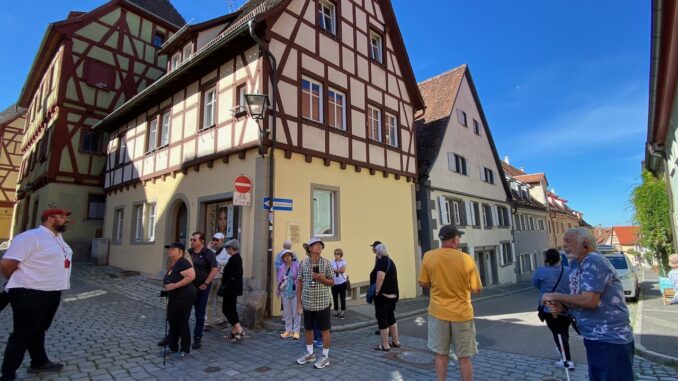
Rothenburg ob Der Tauber, one of Germany’s last remaining walled towns was the destination in early September 2023 during a Viking River Cruise on the 190 passenger Viking Baldur. Our optional excursion also included a tour of the massive Prince Bishop’s Residence in Wurzberg.
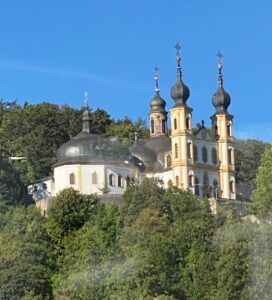
During a one hour comfortable bus ride from the dock in Wurzburg through small towns and some super highways, our guide Tiago enthusiastically discussed the history of the area and the various crops dotting the countryside. He talked about the sugar beet production and the recent droughts which have effected this primary crop in the area. Beet flowers lined both sides of the road.
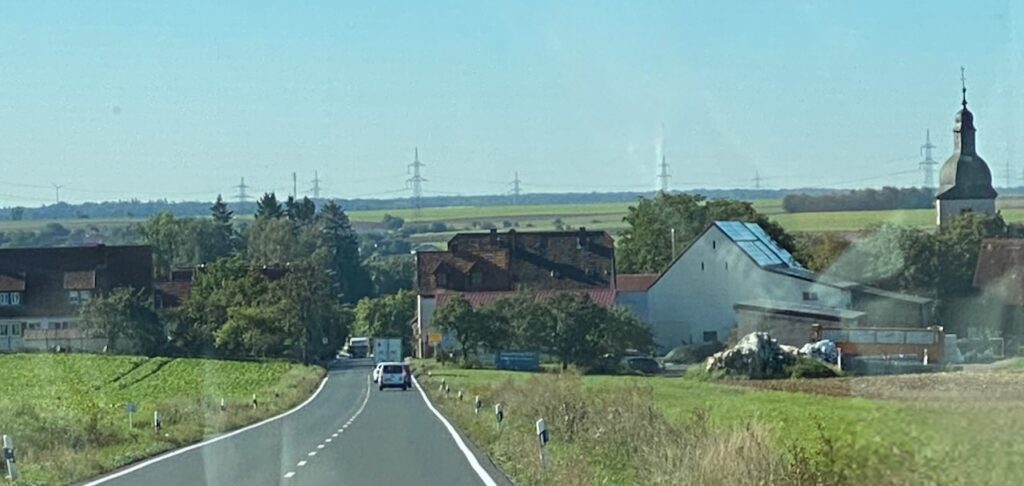
It is easy to understand why Rothenburg is such a popular tourist destination. Its massive stone walls surround the half timbered homes giving the town an authentic medieval look.
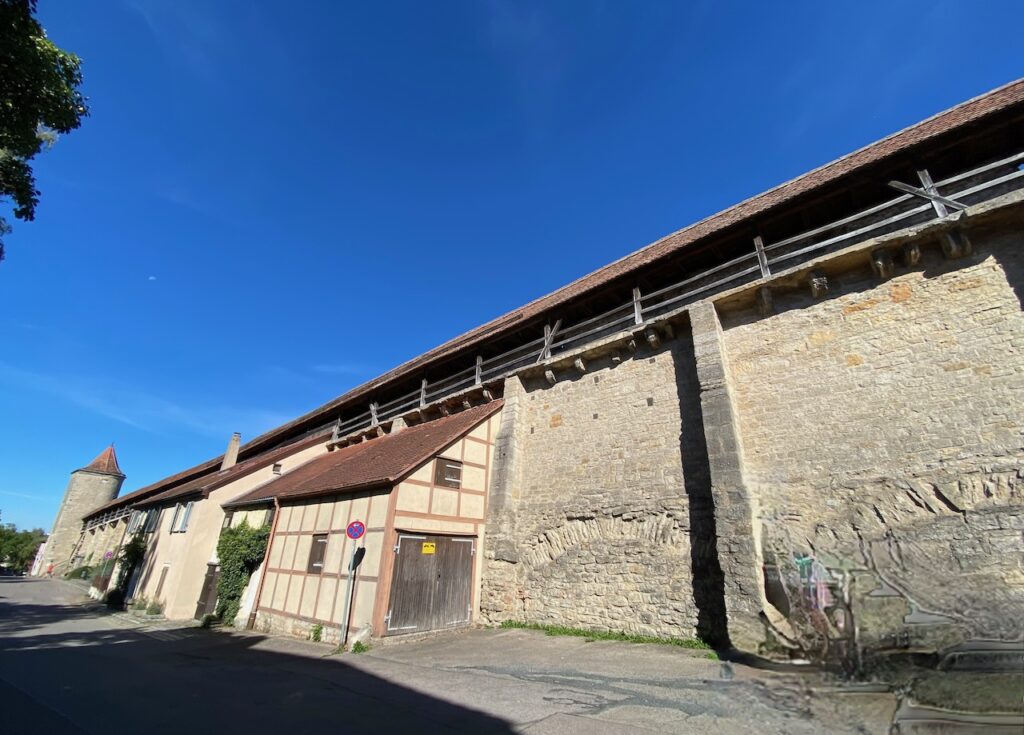
Jewish Community
As we entered the city through the opening in the stone wall, Tiago filled us in on the history of the town which was founded in 960. Many of our group were surprised to learn that there had been an active Jewish community in Rothenburg beginning in about 1100. There was a Jewish cemetery, a synagogue, and a mikvah (a ritual bath designed for the Jewish rite of purification). The Jewish people were well integrated in terms of housing and social circles. There was not a Jewish Ghetto or separation at that time.
The Jewish people there were active in all facets of the community. But in 1519, a local priest accused the Jews of poisoning the wells. Tiago told us that in 1520, the entire Jewish population was expelled from the town, the synagogue was burned down, and the Catholics moved into the Jewish homes.
Construction
As we walked through the narrow cobblestone streets, Tiago pointed out a spot where we could see and understand the meaning of half-timber construction. One reason for this, he said, is that the stones found in the area are weak. Also, half-timber construction is warmer and less expensive then a stone home.
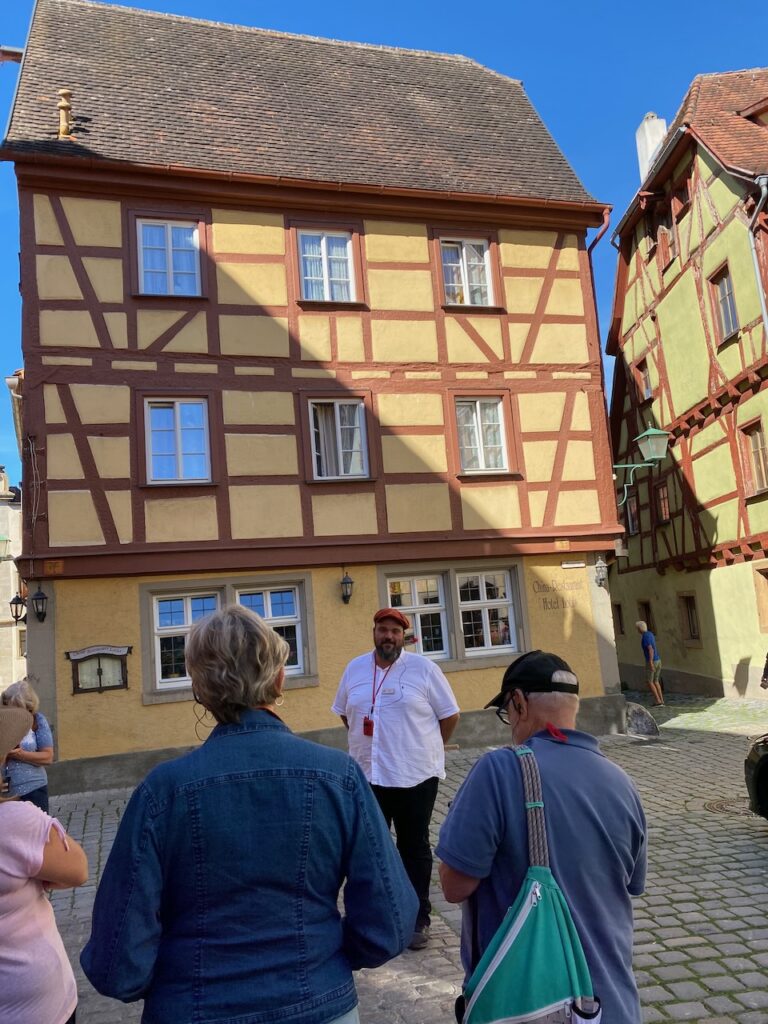
Tiago reminded us that many of the homes we were seeing were built in medieval times when there was always the danger of siege by the various enemies through the ages. We were surprised to find that they had barns in the attics so the grains could be protected from the enemies.
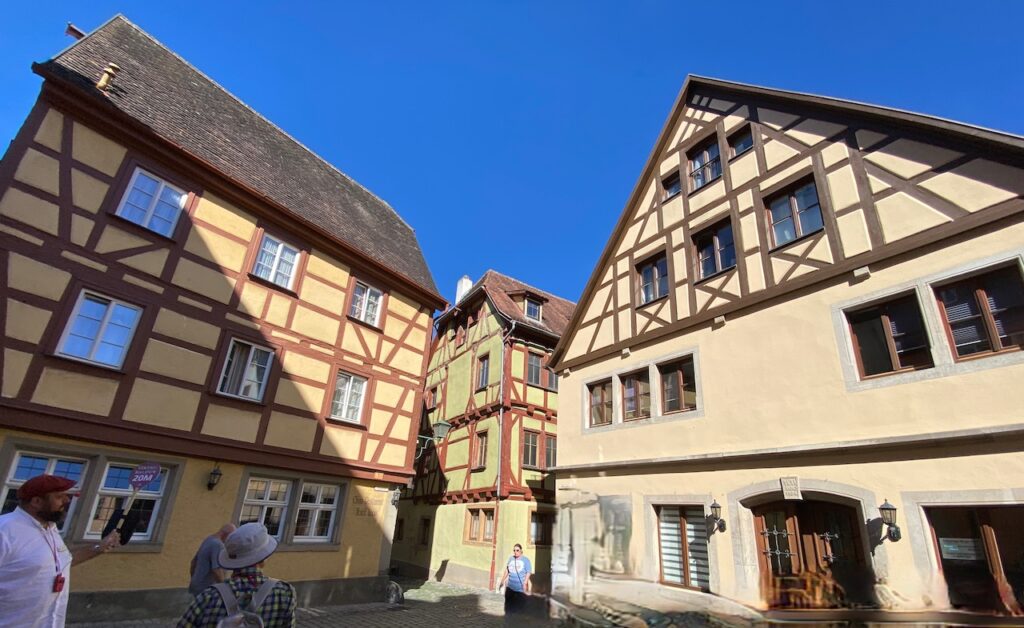
History
We learned that during the 1100’s, the town was becoming a major market city. In 1274, King Rudolf of Hapsburg elevated Rothenburg to a Free Imperial City. This designation reduced taxes and helped elevate the city’s status as a major trading location.
The city council in 1555 declared Rothenburg to be Protestant instead of Catholic. This became an issue during the Thirty Years War. A force of 48,000 Catholic soldiers surrounded the city during the conflict. According to legend, the mayor of the town prevented its total destruction by consuming a keg of wine as part of a challenge. Never the less, the town was looted and its decline as a major trading center began.
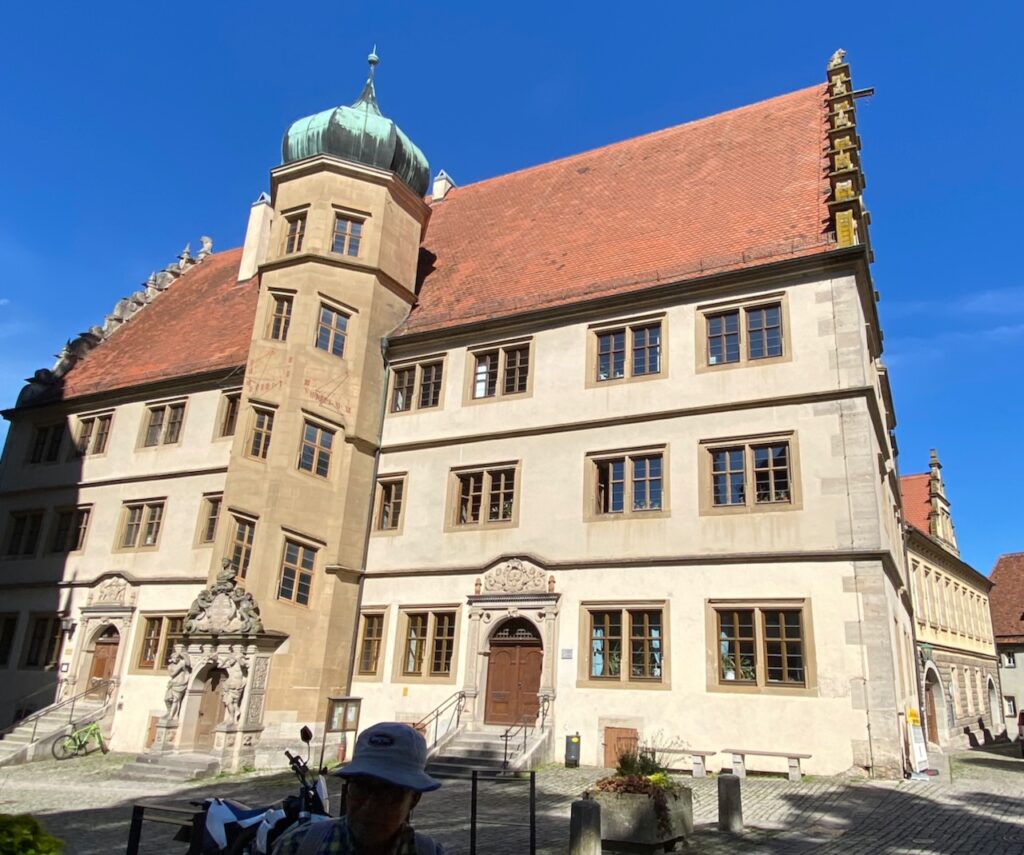
About 40% of the town was destroyed by the Allies during World War II. But donations poured in after the war and much of this classical medieval town was restored. The Gothic-Renaissance Town Hall again dominates the town’s main square.
Strolling Through Town
Today, the town is a major tourist location due to both its medieval architecture and charming shops. Käthe Wohlfahrt’s Christmas Village is one of the prime tourist attractions. The shop of 16,000 square feet houses a huge variety of German Christmas decorations, A giant nutcracker named Christian1 at the shop entrance is a popular focal point for picture-taking.
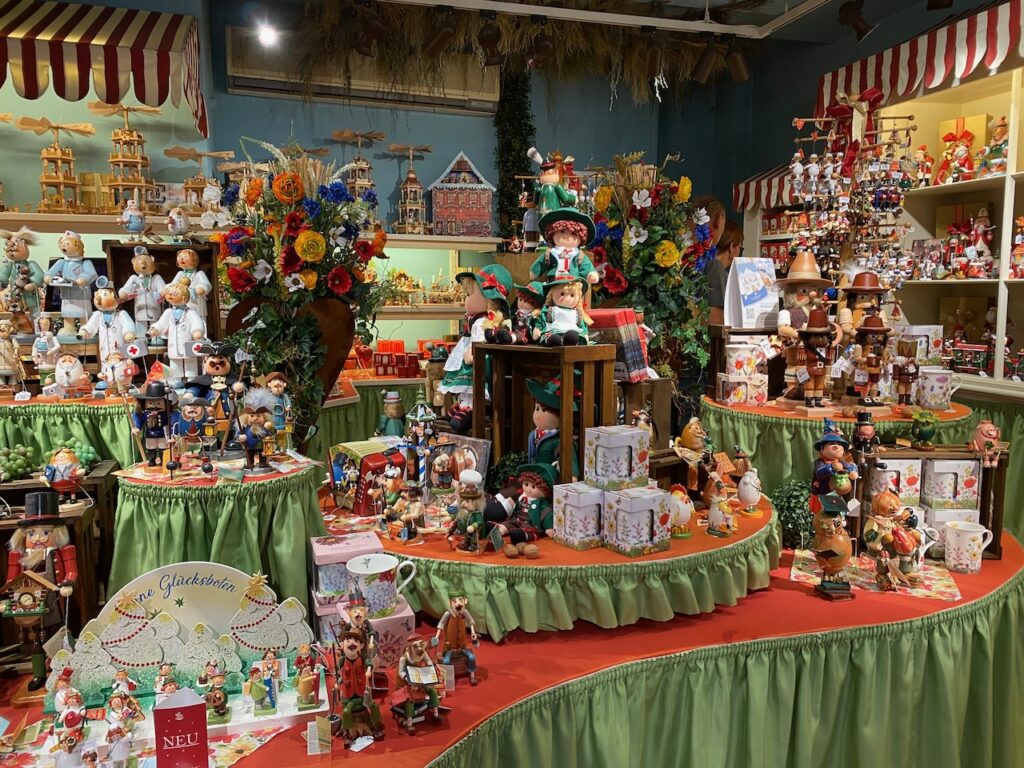
A 16 foot tall revolving white Christmas tree, decorated with over 1,000 glass balls and 12.500 sparkling lights, draws admiration from all who enter.
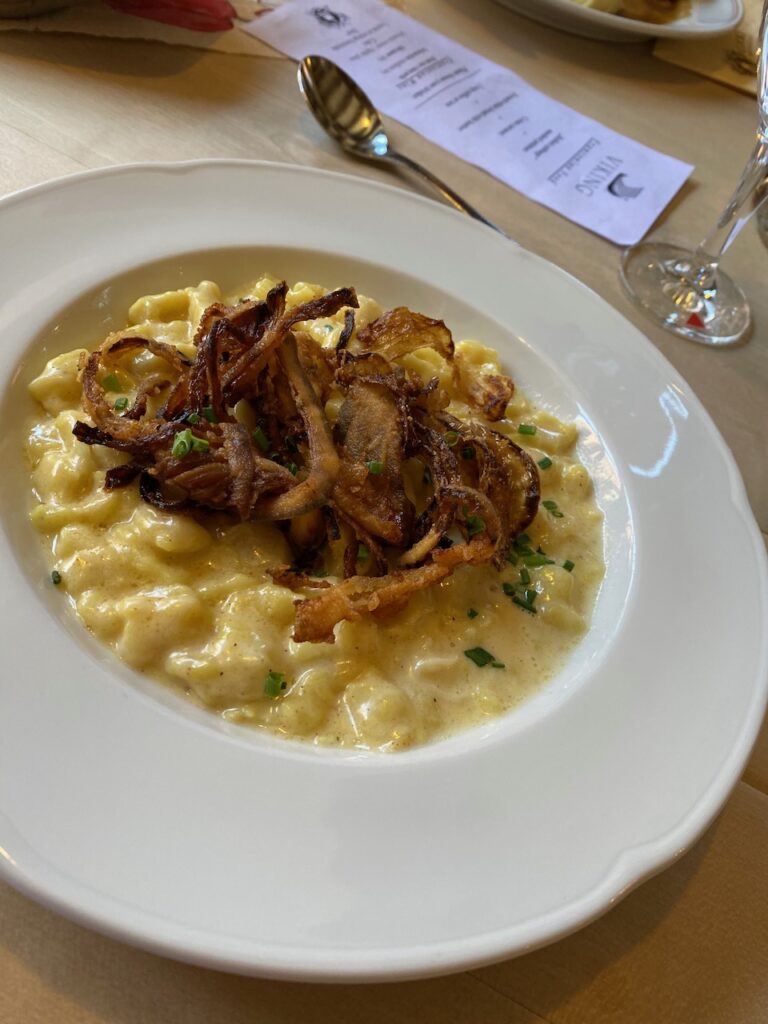

WURZBURG PRINCE-BISHOP’S RESIDENCE
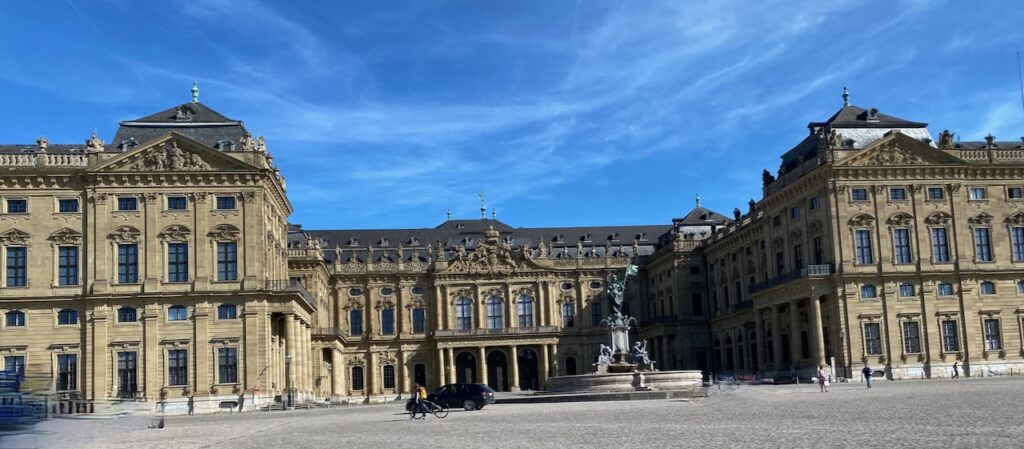
Upon our return to Wurzburg, we visited the Prince-Bishops residence. This ornate 360 room structure was modeled after Versailles. Construction began in 1719 and ended 25 year later in 1744. The residence was heavily damaged during World War ll, but has been restored and is now a UNESCO world heritage site.
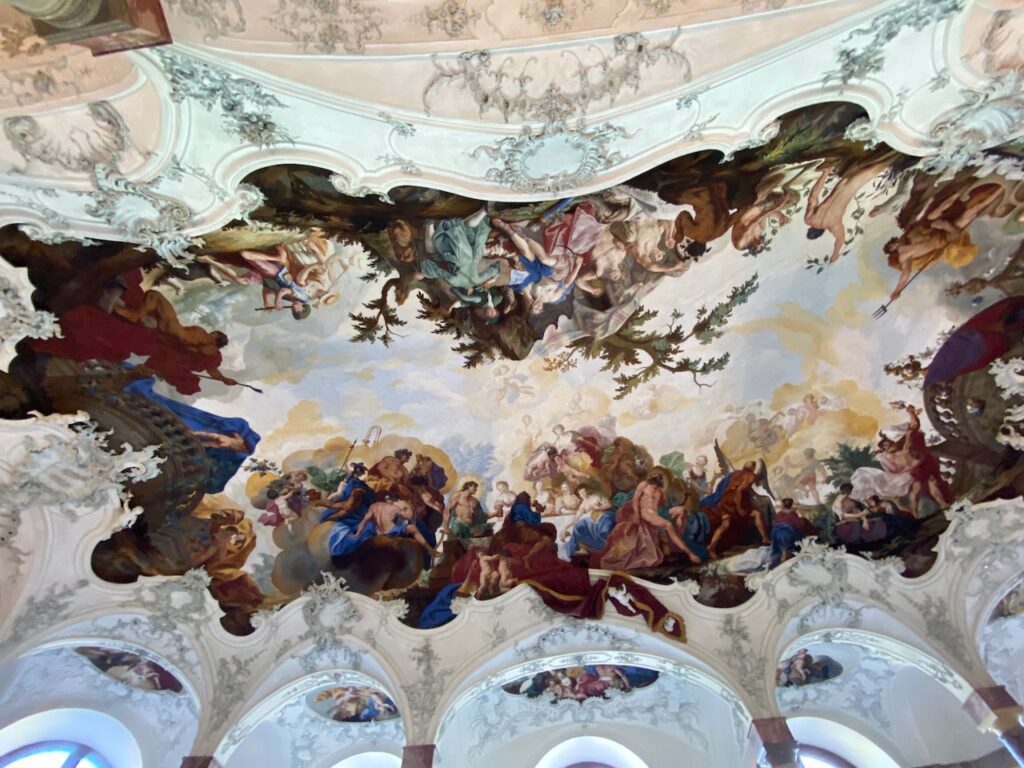
In the massive impressive fresco, he depicted imaginary scenes from the four continents known at that time personified by regal female figures. As example, the scene from the Americas depicts a woman riding an alligator. This illustrated the wild state of the Americas.
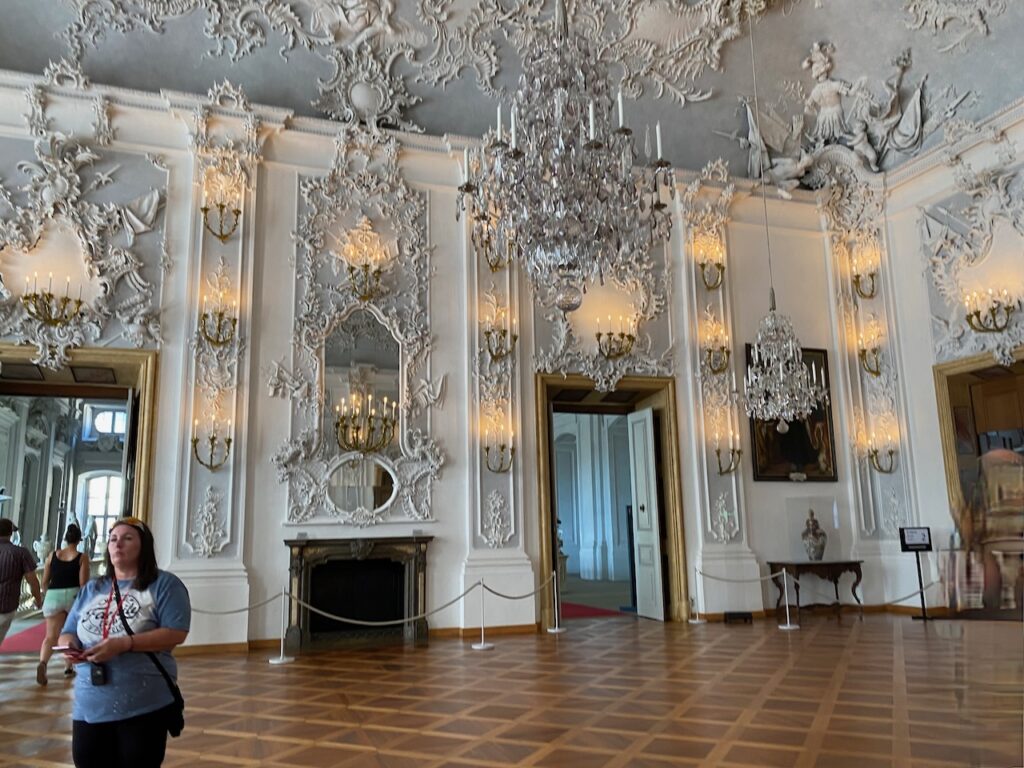
The adjacent White Hall as the name describes is entirely white and was completed in nine months.
The White Hall function as a guard hall, where the prince bishops lifeguards in parade uniforms, kept watch when high-ranking guests were received. The impressive stucco work decoration was created by Antonio Bossi in only nine months from 1744 to 1745. Military symbols and trophies in the corners of the ceiling and over the doors indicate the function of the room.
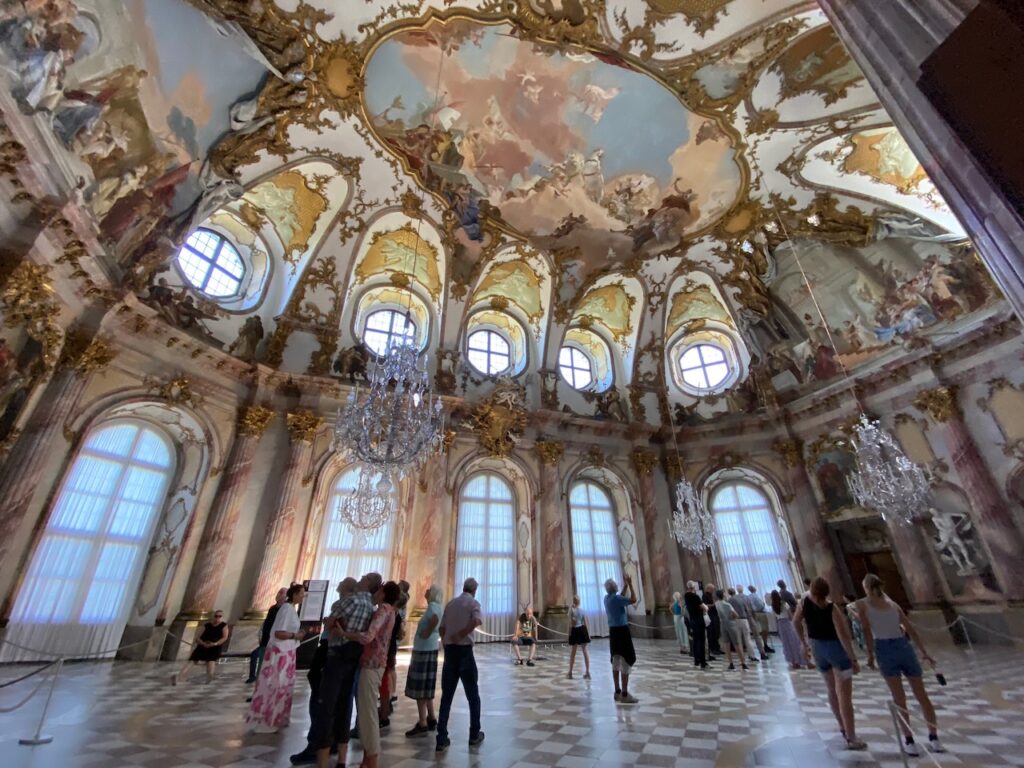
Next we saw the Imperial Hall which was designed for concerts and major meetings. It is dominated by imitation marble. The prince bishops wanted to impress
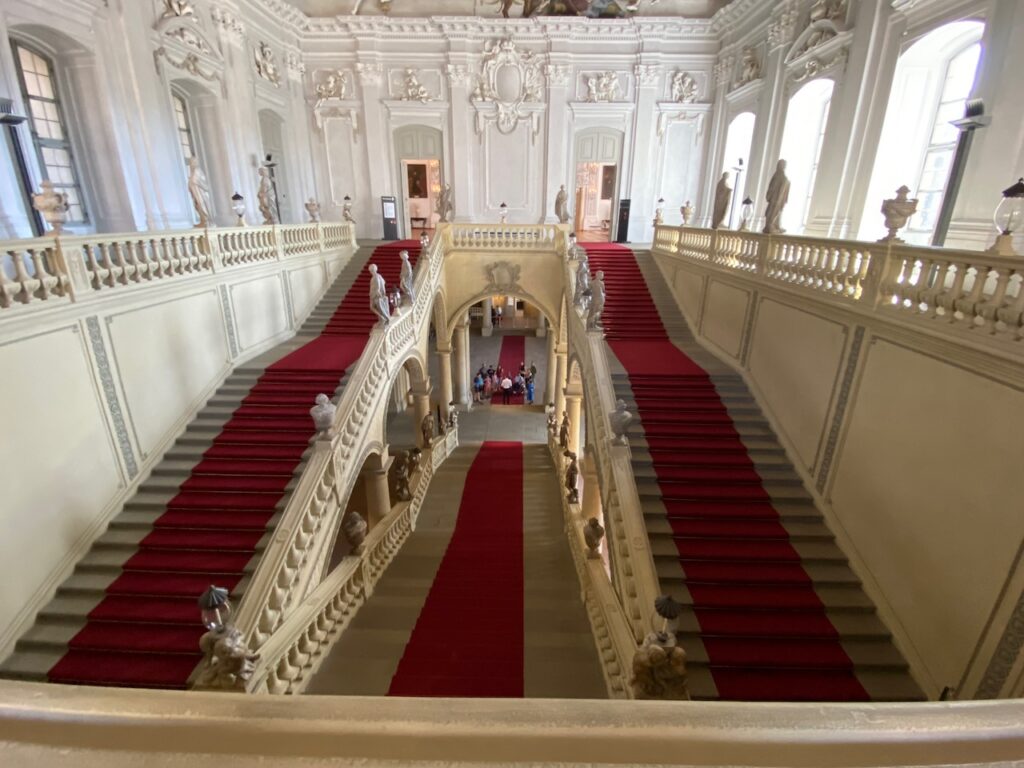
After touring the palace,we returned to the Viking Baldour. The day was visually interesting and historically informative, helping us understand the history and dynamics of Medieval Germany.
Article by Burt Davis and Dianne Davis




Be the first to comment